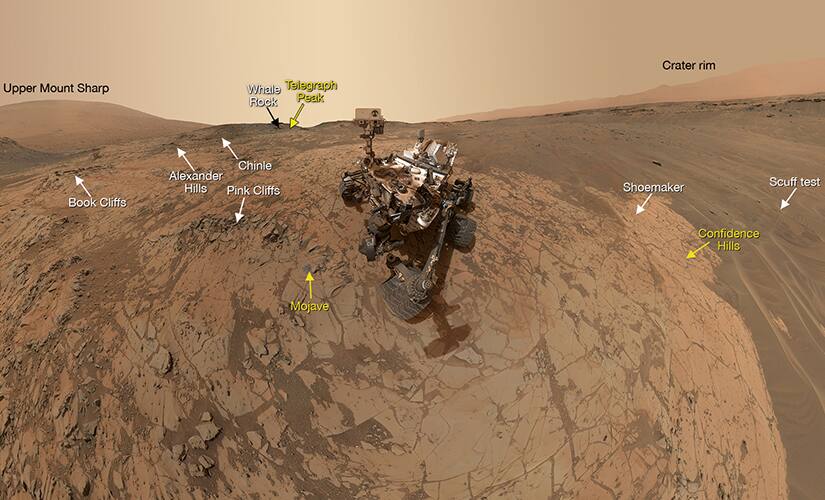NASA’s Curiosity Mars rover, it appears, could not resist the selfie fever that has hit everyone back here on Earth. The robot vehicle, now at the “Mojave” site, where its drill collected the mission’s second taste of Mount Sharp, sent back to Earth this scene - a combination of dozens of pictures clicked by its robotic arm. [caption id=“attachment_2124181” align=“alignleft” width=“380”]  Nasa’s Mars Curiosity rover clicked this selfie.[/caption] The rover’s wrist motions and turret rotations on the arm allowed the Mars Hand Lens Imager (the device used to click the pictures) to acquire the mosaic’s component images. The arm was positioned out of the shot in the images, or portions of images, that were used in this mosaic. However, this was not the first time that the method was used. Self-portraits were taken atsample-collection sites ‘Rocknest’, ‘John Klein’ and ‘Windjana’. MAHLI was built by Malin Space Science Systems, San Diego. Nasa’s Jet Propulsion Laboratory, a division of the California Institute of Technology in Pasadena, manages the Mars Science Laboratory Project for the NASA Science Mission Directorate, Washington. JPL designed and built the project’s Curiosity rover. The annotated version below labels several of the sites Curiosity has investigated in January this year. The rover used its sample-collecting drill at “Confidence Hills” as well as at Mojave, and in late February was assessing “Telegraph Peak” as a third drilling site. 
NASA’s Curiosity Mars rover, it appears, could not resist the selfie fever that has hit everyone back here on Earth.
Advertisement
End of Article


)
)
)
)
)
)
)
)
)



